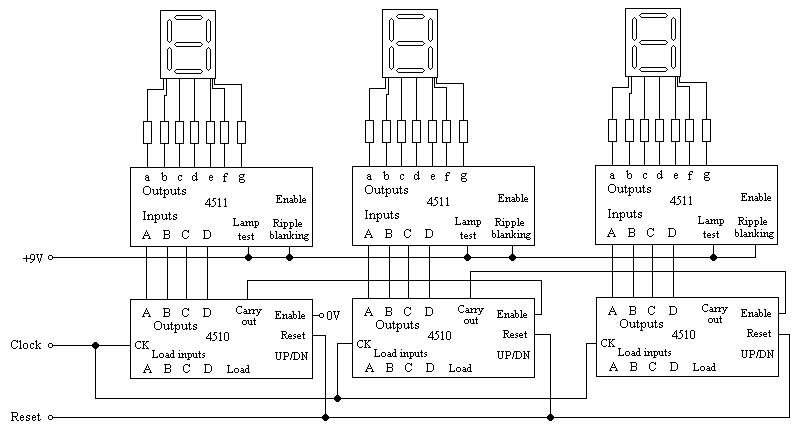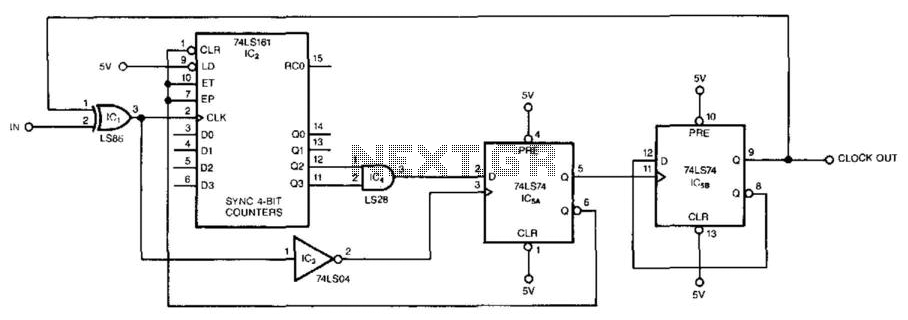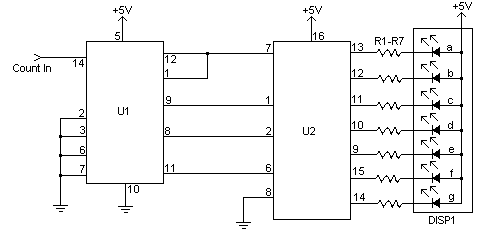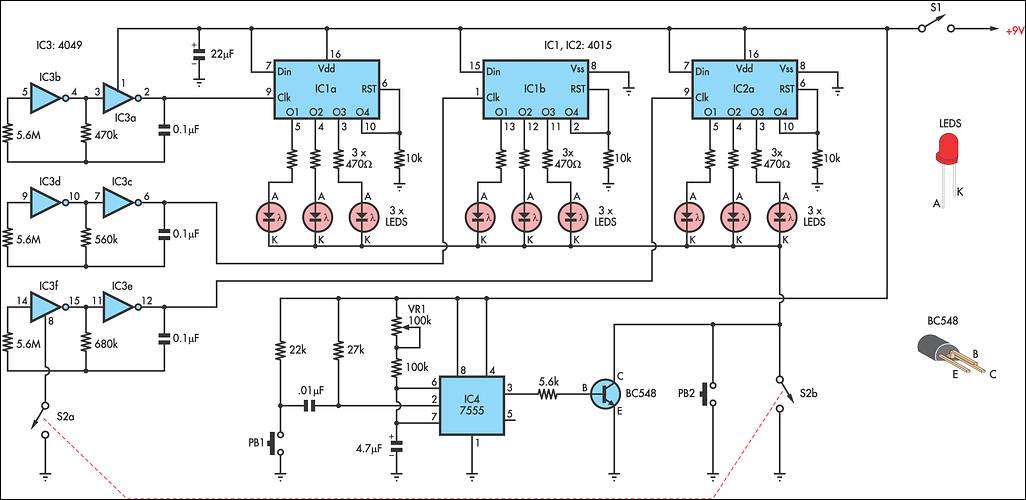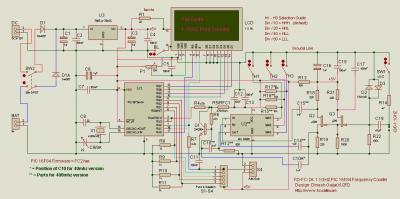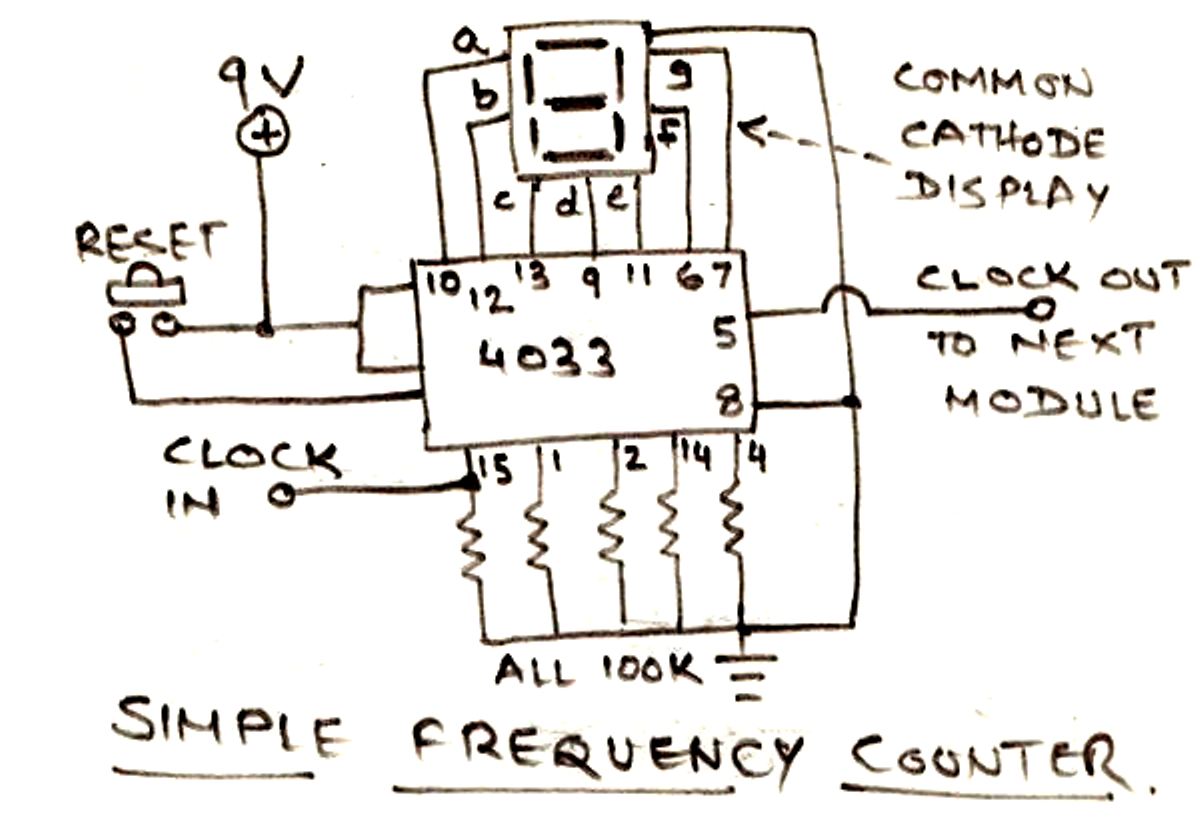
Quick Counter For Young Children
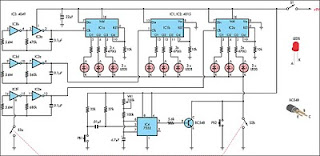
This circuit is a toy designed to encourage young children to count. Power is activated by switch S1, followed by closing switch S2, which causes nine LEDs to flash slowly. When S2 is opened, the LEDs turn off. Pressing pushbutton PB1 briefly turns on a random number of LEDs, which children are to count. The counted number can be verified by pressing PB2, which turns on the same LEDs for as long as needed. The circuit operates as follows: IC3 is a 4049 hex inverter configured as three oscillators running at different frequencies. It is activated by closing switch S2a. The clock pulses generated by IC3 drive both halves of IC1 and one half of IC2, both of which are 4015 dual 4-stage shift registers. Each shift register has four outputs that sequentially go high: 1, 1 and 2; 1, 2 and 3; 1, 2, 3 and 4. However, since output 4 is connected to the reset line of its own half, the shift register resets to zero. Outputs 1, 2, and 3 of all three shift registers are connected to nine LEDs, with the cathodes linked to a common rail. This rail is grounded through S2b when switch S2 is closed. When S2 is opened, the three oscillators stop, but a random number of LEDs remain connected to the high outputs of the 4015s. This number can be briefly displayed by pressing PB1, which triggers the 7555 timer in monostable mode, providing a short output duration that drives Q1, connecting the LED cathodes to 0V. The viewing time is adjustable via VR1. To check the count, pressing PB2 keeps the same LEDs illuminated for as long as desired. The LEDs are arranged in a 3 x 3 grid with scattered connections; for instance, the first row does not consist of the three LEDs from the first half of IC1. It is important to note that, unlike a standard die, a number such as 5 can appear in various configurations, making pattern recognition ineffective. Additionally, this is not a true nine-output die, as the numbers do not appear with equal frequency.
The circuit design incorporates several key components to facilitate its functionality. The 4049 hex inverter (IC3) serves as a versatile oscillator, generating clock pulses at different frequencies. These pulses are crucial for driving the 4015 dual 4-stage shift registers (IC1 and IC2), which sequentially activate the outputs that control the LEDs. The randomization of the LED illumination is achieved through the timing mechanism provided by the 7555 timer, allowing for a brief but effective display of the LEDs that children can count.
The configuration of the LEDs in a 3 x 3 grid not only provides a visually appealing layout but also enhances the learning experience by presenting numbers in various formats. This design encourages children to engage with the circuit actively, fostering both counting skills and cognitive recognition of patterns. The adjustable viewing time via VR1 allows for customization based on the child's pace, making the learning process adaptable and effective.
Overall, this circuit serves as an educational tool that combines electronic principles with interactive learning, providing an engaging way for children to practice counting while exploring basic electronics concepts. The thoughtful arrangement of components and the interactive features of the circuit work together to create a stimulating learning environment.This circuit is a toy to encourage young children to count. Power is turned on by switch S1, then S2 is closed. This makes nine LEDs flash slowly. S2 is then opened and the LEDs go out. Pressing pushbutton PB1 turns on a random number of LEDs - briefly - during which time they are to be counted. The number counted can be checked by pressing PB2 wh ich turns the same LEDs on for as long as needed. Then repeat. The circuit works as follows: IC3 is a 4049 hex inverter connected as three oscillators running at different rates. It is turned on by closing switch S2a. The clock pulses from IC3 drive both halves of IC1 and one half of IC2, both being 4015 dual 4-stage shift registers.
Each shift register has four outputs which go high in order: 1, 1 and 2; 1 and 2 and 3; 1 and 2 and 3 and 4. However as output 4 is connected to the reset line of its own half - the shift register resets to zero.
Outputs 1, 2 & 3 of all three shift registers are connected to nine LEDs, the cathodes of which go to a common rail. This rail is connected to ground via S2b when switch S2 is closed. When S2 is opened the three oscillators stop but a random number of LEDs is still connected to the high outputs of the 4015s.
That number can be viewed briefly by pressing PB1 which pulses the 7555 timer in monostable mode, to give a short duration output which drives Q1 and connects the LED cathodes to 0V. The viewing time is adjustable by VR1. Checking a count is done by pressing PB2 which holds the same LEDs on as long as desired. The LEDs are set in a 3 x 3 grid with the connection scattered, ie, the first row is not the three LEDs from the first half of IC1.
Note that, unlike the usual dice, a number such as 5 can appear in many formats, so pattern recognition is no help. Also note that this is not a nine output true dice - because the numbers do not come up with equal frequency.
🔗 External reference
The circuit design incorporates several key components to facilitate its functionality. The 4049 hex inverter (IC3) serves as a versatile oscillator, generating clock pulses at different frequencies. These pulses are crucial for driving the 4015 dual 4-stage shift registers (IC1 and IC2), which sequentially activate the outputs that control the LEDs. The randomization of the LED illumination is achieved through the timing mechanism provided by the 7555 timer, allowing for a brief but effective display of the LEDs that children can count.
The configuration of the LEDs in a 3 x 3 grid not only provides a visually appealing layout but also enhances the learning experience by presenting numbers in various formats. This design encourages children to engage with the circuit actively, fostering both counting skills and cognitive recognition of patterns. The adjustable viewing time via VR1 allows for customization based on the child's pace, making the learning process adaptable and effective.
Overall, this circuit serves as an educational tool that combines electronic principles with interactive learning, providing an engaging way for children to practice counting while exploring basic electronics concepts. The thoughtful arrangement of components and the interactive features of the circuit work together to create a stimulating learning environment.This circuit is a toy to encourage young children to count. Power is turned on by switch S1, then S2 is closed. This makes nine LEDs flash slowly. S2 is then opened and the LEDs go out. Pressing pushbutton PB1 turns on a random number of LEDs - briefly - during which time they are to be counted. The number counted can be checked by pressing PB2 wh ich turns the same LEDs on for as long as needed. Then repeat. The circuit works as follows: IC3 is a 4049 hex inverter connected as three oscillators running at different rates. It is turned on by closing switch S2a. The clock pulses from IC3 drive both halves of IC1 and one half of IC2, both being 4015 dual 4-stage shift registers.
Each shift register has four outputs which go high in order: 1, 1 and 2; 1 and 2 and 3; 1 and 2 and 3 and 4. However as output 4 is connected to the reset line of its own half - the shift register resets to zero.
Outputs 1, 2 & 3 of all three shift registers are connected to nine LEDs, the cathodes of which go to a common rail. This rail is connected to ground via S2b when switch S2 is closed. When S2 is opened the three oscillators stop but a random number of LEDs is still connected to the high outputs of the 4015s.
That number can be viewed briefly by pressing PB1 which pulses the 7555 timer in monostable mode, to give a short duration output which drives Q1 and connects the LED cathodes to 0V. The viewing time is adjustable by VR1. Checking a count is done by pressing PB2 which holds the same LEDs on as long as desired. The LEDs are set in a 3 x 3 grid with the connection scattered, ie, the first row is not the three LEDs from the first half of IC1.
Note that, unlike the usual dice, a number such as 5 can appear in many formats, so pattern recognition is no help. Also note that this is not a nine output true dice - because the numbers do not come up with equal frequency.
🔗 External reference
